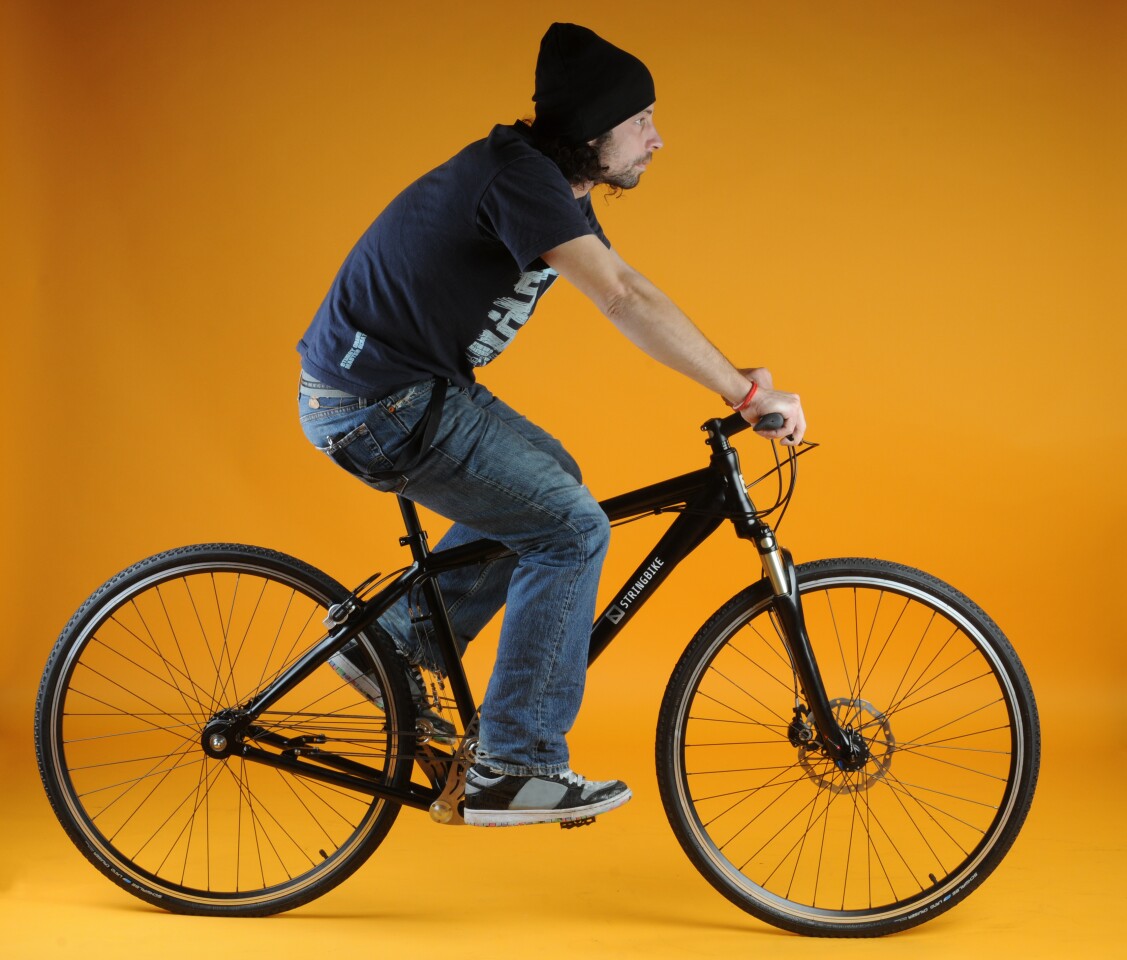At first glance, a proposal to replace a bicycle's familiar chain and cog drive with one that uses string may sound like lunacy, but that's exactly what's been done to produce the Stringbike. The system features freewheel mechanisms on either side of the rear wheel connected by polyethylene rope to a precisely positioned, symmetrical swinging arm that drives the bicycle forward. When the unit on the right is driving the bike forward, the other is being returned to its starting position and vice-versa which is said to result in greater efficiency and makes for a more comfortable, easier ride.
Stringbike's roots lie in a postgraduate challenge at Budapest Technical University in the early 1990s, to think outside the box and overcome some design issues relating to chain-driven bicycles. One team proposed a chainless system involving freewheels on either side of the rear wheel, which is driven by a sophisticated wired pulley mechanism. The aim was to overcome inefficiencies of a chain and gear system – where the drive mechanism is placed on just one side of a bicycle – that have gone relatively unnoticed due to the ubiquitous nature of this design.

An earlier, now abandoned Stringdrive design
The design has undergone numerous changes since development proper began in 1994 and various problems led to a couple of the designers giving up and moving onto other things. Work started again in 2006 with Michael Lantos and Robert Kohlheb at the helm. Using computer-aided-design software to help iron out some of the issues, they ended up with the Stringbike you see here.
The Stringdrive system consists of a drive unit on either side of the bike frame. Each unit is positioned in mirror symmetry to the other, so when one is moving forward, the other is moving backwards. When force is applied to the pedal, the stainless steel, triangular-shaped swinging mechanism pulls on the rope and rotates a drum on the rear wheel to give forward momentum.

The system uses the kind of durable, high density polyethylene rope used in sailing. Lantos told Gizmag that the rope does have "a little elasticity, and this has been calculated in the process when the task of driving is shifted from one side of the frame to the other one." The rope has a 3mm diameter and a breaking strength of over 900kg (1,984 lbs). There are stronger ropes available, but the designers reckon that the maximum load (greatest transmission ratio, highest pedal force) on the four cords is only about 450kg (992 lbs).
The system is designed so that when one triangular-shaped eccentric disc is pulling the wheel's drum forward, the other is going backward and returning the rope to the starting position. The symmetrical system "shifts the task of driving unnoticeably from the right to the left sides and vice versa" to offer a familiar, more comfortable, experience for the rider.
The Stringdrive alternating drive system benefits from 19 different transmission ratios – the outer position gives maximum and the inner gives minimum ratios – which are selected by moving the rope wheels up and down the notch positions on the swinging arm. A major achievement with the final design is the ability to freewheel backwards.
Lantos explained: "Normally if you use two differing freewheel clutches in the rear wheel they allow rotation of the wheel in forward direction only. As no bike can be commercialized that cannot be pushed backwards, this simple-looking task had to be solved, and it was technically very difficult."

The Stringbike has undergone lots of intensive testing over the development period, "including operating in a test machine under load over 10,000 km [6,214 miles], then riding by several bikers under very different conditions." The system is sealed against weather and dirt but the rope, swinging arm and outer casing of the drums will need some attention – soiling of clothing from oil should be avoided though.
Only one manufacturer has so far been licensed to use the system, Schwinn Csepel, but actual commercial manufacture has yet to begin. Future incarnations of the system may see different transmission ratios being used on either side of the bike to cater for those who have a weakness in one leg.
















